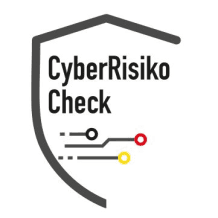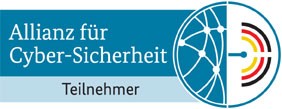Introduction to the Human Firewall
In the digital world, cyberattacks are ubiquitous, and securing your systems against these threats is of paramount importance. While technical solutions such as firewalls, antivirus programs, and intrusion detection systems are integral components of cybersecurity, humans play an equally important role. This is where the concept of the Human Firewall comes into play.
What is a Human Firewall?
A Human Firewall refers to the group of employees within a company who are continuously trained and made aware to recognize and defend against potential cyberattacks. This human defense line works alongside technical measures to strengthen a company’s security posture and reduce incidents caused by human error.
The Importance of a Human Firewall
The importance of a Human Firewall lies in its ability to heighten employees' awareness of security risks. Given that many security breaches are caused by human errors, a well-trained workforce can make a significant difference. Phishing attacks, social engineering, and weak passwords are common attack methods that can be recognized and prevented by trained employees.
Characteristics of an Effective Human Firewall
1. Awareness Training: Ongoing training on the latest threats and best practices is essential.
2. Accountability: Employees should be aware of the potential impacts of their actions.
3. Encouragement to Report Incidents: An open environment where employees feel safe to report potential threats.
4. Continuous Improvement: Feedback loops and adapting training content to new threats.
Implementing a Human Firewall
To efficiently implement a Human Firewall, companies should consider the following strategies:
1. Security Training
Regular security training that informs employees about current threats is essential. Training should be interactive and hands-on to promote engagement.
2. Security Policies
Clearly defined security policies help employees understand their role in protecting the company. These policies should be easily accessible and regularly updated.
3. Cultivating a Security Culture
A security culture fosters an environment where security is prioritized. This includes recognizing and rewarding security-relevant behavior.
4. Phishing Simulations
Phishing simulations are an excellent method to test and strengthen employee awareness. These should be conducted regularly to assess and improve employee responses.
Benefits of a Human Firewall
A strong Human Firewall offers numerous benefits, including:
1. Reduced Attack Surface: Trained employees decrease the likelihood of successful attacks such as phishing.
2. Quick Threat Detection: Employees are able to recognize and report anomalies faster.
3. Increased Behavioral Monitoring: With a trained workforce, it is easier to identify and correct unsafe behavior.
4. Strengthening Company Image: Awareness of security within the company enhances trust from clients and partners.
Challenges and Solutions
Although a Human Firewall offers numerous benefits, there are also challenges that must be addressed:
1. Engaging Training
It can be challenging to provide continuous and engaging training. Solution: Use gamified learning methods to enhance engagement.
2. Information Overload
Too much information at once can be overwhelming. Solution: Provide short, frequent learning modules instead of longer sessions.
3. Resistance to Change
Employees may resist new security practices. Solution: Ensure transparent communication management and integrate security measures into daily routines.
Conclusion
A Human Firewall is an indispensable component of any comprehensive cybersecurity strategy. By heightening employees' awareness and enhancing their ability to recognize and report threats, it significantly reduces the risk of cyberattacks. Companies that invest in a strong security culture are better equipped to tackle the challenges of the modern cyber threat landscape.
Human Firewall in Germany: Current Developments
The importance of human firewall in Germany is continuously growing. According to recent studies by the Federal Office for Information Security (BSI), German companies are increasingly affected by cyber threats. The Bitkom association reports that 84% of German companies have been victims of cyberattacks in the last two years.
Particularly in the area of human firewall, the following trends are evident:
Increasing investments in preventive security measures
Heightened awareness of holistic security concepts
Integration of human firewall into existing compliance frameworks
EU Compliance and Human Firewall
With the introduction of the NIS2 directive and stricter GDPR requirements, German companies need to adjust their security strategies. Human Firewall plays a central role in meeting regulatory requirements.
Key compliance aspects:
Documentation of security measures
Regular review and update
Proof of effectiveness to regulatory authorities
Practical Implementation in Everyday Business
The integration of human firewall into everyday business requires a structured approach. Experience shows that companies benefit from a phased implementation that considers both technical and organizational aspects.
Think of human firewall as insurance for your company: The better prepared you are, the lower the risk of damage from security incidents.
Further Security Measures
For a comprehensive security strategy, you should combine human firewall with other security measures:
Vulnerability Management - Systematic vulnerability management
Penetration Testing - Comprehensive security testing
Security Hardening - Employee awareness
Incident Response Plan - Preparation for security incidents
Conclusion and Next Steps
Human Firewall is an essential building block of modern cybersecurity. Investing in professional human firewall measures pays off in the long term through increased security and compliance compliance.
Would you like to optimize your security strategy? Our experts are happy to assist you in implementing human firewall and other security measures. Contact us for a free initial consultation.
🔒 Act now: Have your current security situation assessed by our experts
📞 Request Consultation: Schedule a free initial consultation on human firewall
📋 Compliance Check: Review your current compliance situation
📌 Related Topics: Cybersecurity, IT Security, Compliance Management, Risk Assessment




